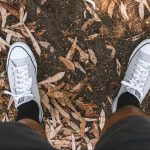Imagine stepping out onto a verdant, plush carpet of grass, feeling the soft blades tickle your toes as you sip your morning coffee. A lush lawn is a coveted treasure for many homeowners, but achieving this vibrant masterpiece requires more than just watering and mowing.
Hidden beneath the surface lies a world of roots, soil, and microorganisms working harmoniously to create your personal outdoor oasis. In this comprehensive guide, we’ll delve into the fascinating world of lawn aeration – the secret weapon for unlocking the full potential of your green sanctuary. So, roll up your sleeves, grab your gardening gloves, and let’s embark with A-Z Landscaping on a journey to nurture the ultimate lawn, one core at a time.
The Importance of Aeration for Lawn Health
Improved Oxygen Circulation
Aeration bolsters the grass roots with oxygen, a vital component for robust growth. When soil is compacted, oxygen levels decline, inhibiting root development and leading to weak, thin grass.
Enhanced Nutrient Absorption
Aerating the lawn promotes the absorption of essential nutrients. By creating channels for nutrients to penetrate the soil, grass roots can access them more easily, fostering a verdant lawn.
Increased Water Infiltration
By alleviating compaction, aeration enables water to seep deeper into the soil. This reduces water runoff and promotes root growth by supplying ample hydration.
Identifying Signs That Your Lawn Needs Aeration
Soil Compaction
A primary reason for aerating is to remedy soil compaction. This occurs when soil particles become densely packed, restricting the flow of water, oxygen, and nutrients. Signs of compaction include standing water after rainfall or difficulty inserting a screwdriver into the soil.
Thatch Buildup
Thatch, a layer of dead grass, roots, and debris, can accumulate between the soil and grass blades. A thatch layer thicker than half an inch indicates the need for aeration to facilitate decomposition and prevent future buildup.
Stunted Grass Growth
Sparse, patchy grass or slow-growing grass may signify the need for aeration. Compacted soil can hinder root development, leading to uneven growth and an overall unhealthy lawn.
Determining the Ideal Aeration Frequency
Climate and Region
The frequency of aeration depends on the local climate and region. Cooler climates require less frequent aeration, while warmer climates may necessitate more frequent treatment.
Soil Type
The soil composition plays a role in aeration frequency. Clay soils tend to compact more readily, requiring more frequent aeration than sandy or loamy soils.
Lawn Usage
The frequency of aeration also depends on lawn usage. Heavily trafficked lawns, such as those with pets or children playing, may require more frequent aeration due to increased soil compaction.
General Guidelines for Aeration Frequency
Generally, cool-season grasses benefit from annual aeration, while warm-season grasses may need aeration twice a year. However, always consider the above mentioned factors when determining the ideal aeration frequency for your lawn.
Types of Lawn Aerators
Spike Aerators
Spike aerators create holes in the soil using wedge-shaped spikes. While these aerators are simple and affordable, they can exacerbate soil compaction, pushing soil aside rather than removing it.
Core Aerators
Core aerators, also known as plug aerators, extract small plugs of soil, leaving behind open channels. This method is more effective in relieving soil compaction compared to spike aerators.
Liquid Aerators
Liquid aerators are chemical solutions applied to the lawn to break up compacted soil. Although convenient, their efficacy is often debated among lawn care experts.
Lawn Aeration Techniques
Manual Aeration
Manual aeration tools like hand-held corers or spike shoes can be used for smaller lawns. While labor-intensive, this method offers precision and control.
Mechanical Aeration
For larger lawns, mechanical aerators can cover more ground efficiently. These machines can be rented or operated by a professional lawn care service.
Best Practices for Aeration
Timing
Aerate your lawn during its active growing season to expedite recovery. For cool-season grasses, aerate in early spring or fall; for warm-season grasses, aerate in late spring or early summer.
Soil Moisture
Aerate when the soil is moist but not saturated. This allows for easier penetration and reduces the risk of further compaction.
Lawn Preparation
Before aerating, mow the lawn to a slightly lower height than usual and remove any debris to ensure effective aeration.
Post-Aeration Lawn Care
Watering
After aeration, water your lawn thoroughly to encourage deep root growth and help the soil settle.
Fertilizing
Apply a slow-release fertilizer after aeration to maximize nutrient absorption and support healthy growth.
Mowing
After aeration, allow the grass to grow slightly taller than usual, then resume your regular mowing schedule.
Additional Lawn Maintenance Tips
Beyond aeration, proper lawn care includes regular mowing, watering, fertilizing, and weed control to maintain a healthy, attractive lawn.
Conclusion: Aeration for a Lush, Healthy Lawn
Homeowners can cultivate a vibrant, thriving lawn by understanding the importance of aeration and implementing the best practices outlined in this guide. Regular aeration and attentive maintenance will ensure your lawn remains the envy of the neighborhood.






